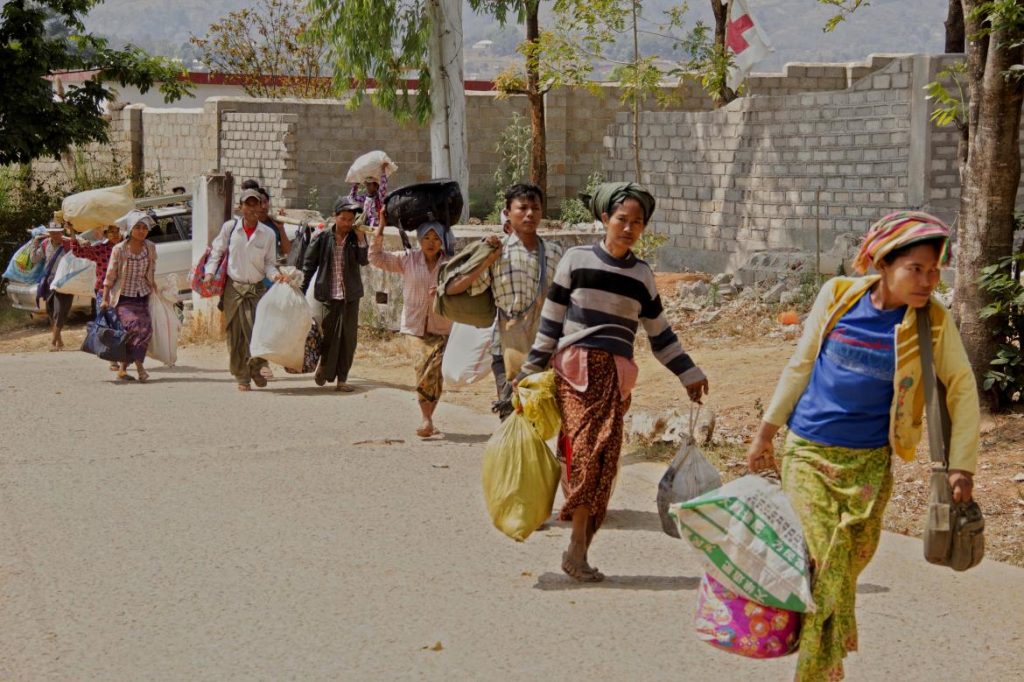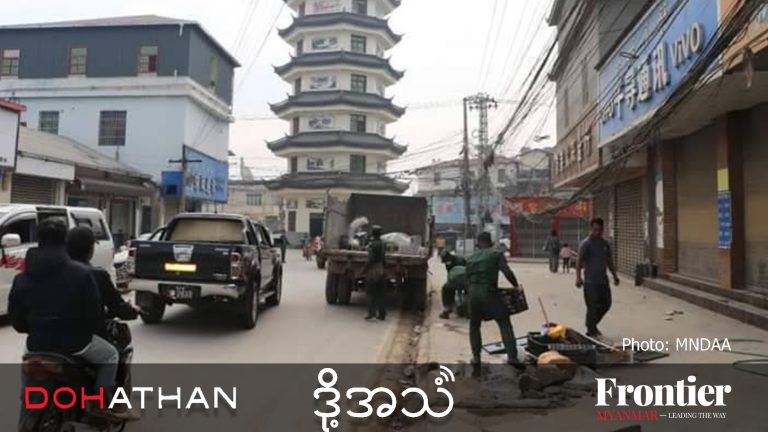By AFP
YANGON — Civilians abandoned the capital of the Kokang special region on Wednesday, saying they feared an imminent army crackdown in retaliation for a deadly raid by insurgent groups.
At least 36 people were killed after Monday’s audacious pre-dawn raid on police and military posts in Laukkai, near the Chinese border.
Fierce gun battles, artillery strikes and fires rocked the town, prompting thousands to flee south or over into China.
Any exodus into China, which called on Tuesday for a ceasefire, could again raise tensions after a similar flare-up of violence in 2015.
Support more independent journalism like this. Sign up to be a Frontier member.
The rebels, from the Myanmar National Democratic Alliance Army (MNDAA), share close cultural links with China and Beijing is believed to have some influence over the fighters.
“Most people have left Laukkai town,” a military officer requesting anonymity told AFP on Wednesday, adding fighting was continuing in surrounding areas.
In an echo of 2015 when Laukkai was also the scene of intense fighting, some families fled south to the Shan state town of Lashio, taking with them rumours of a looming army “clearance operation”.
“We have been very scared since the fighting,” said Myint Kyi, a 44-year-old construction worker who was among those sheltering in a monastery.
“Hotels were destroyed. Cars were burned … I left all of our belongings there because we had to run for our survival,” she added.
Ethnic insurgencies have waxed and waned for decades in Myanmar’s northeastern borderlands.
But fighting has surged since last year as the army clashes with several different ethnic armed groups, undermining a government bid to forge peace.
Late on Tuesday the rebels said they attacked Laukkai to protest at “continued military pressure” on the Northern Alliance — a coalition of four ethnic minority armies which have yet to join the peace process.
“We will continue our self-defence war to decrease the military pressure,” the group said in a statement, conceding the army pushback had forced them to temporarily retreat.
More than 20,000 people have already been displaced in Shan and Kachin states by bouts of violence that have rumbled through the area since November, according to recent army figures.
Experts say the fighting in the frontier areas is at its most intense since the 1980s, casting a pall over peace talks organised by the civilian government of Daw Aung San Suu Kyi.
The UN has also warned of a growing humanitarian crisis in conflict areas, where access to the displaced is severely restricted.







